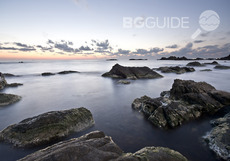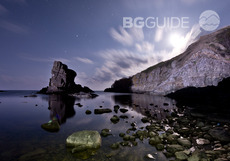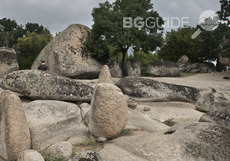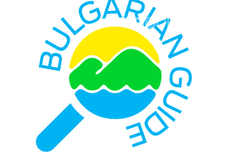Varvara
Varvara is a small picturesque village on the Black Sea coast, between the towns of Tsarevo and Ahtopol.
Wide beaches, picturesque coves and a thousand-year-old history
An almost 60-meter sheer cliff literally puts an end to the Balkans’ “dive” into the sea, a “boundary”, though only provisional that splits the Black Sea coast in two: North and South. The headland, surrounded by hundreds of other rocks, waywardly protruding underwater and above water, is called Cape Emine. Navigation here is to say the least encumbered, if not downright dangerous, but the place is incredibly beautiful and majestic. Its beauty can best be appreciated in clear and sunny weather, when it reveals a spectacular view of the entire coast with all its bays, capes and headlands. Cape Emine is a landmark - the lighthouse and the meteorological station were built on the foundations of the medieval fortress of Emona. Nearby, a small village of the same name, keeps the ruins of an ancient Thracian sanctuary. The small resort of Obzor is to the north, with wide beaches, clean air and rich history. Here, countless architectural and ceramic fragments, remains of walls and columns are evidence of the latter.
Many holiday villages and resorts are south of Emine – “Elenite”; the ancient town of “St. Vlas”; one of the biggest Bulgarian Black Sea resorts “Sunny Beach” with its natural dunes and rare vegetation. Next town though - Nessebar - by all means deserves more attention due to its rich and long history and numerous testimonies about it. The romantic old town, located on a rocky peninsula, keeps valuable monuments from just about every period of its centuries-old existence - walls from the Roman era and the Middle Ages- the true wealth of the city, dozens of Byzantine and old Bulgarian churches, old houses from the XVIII and XIX century. Nessebar is declared a “city-museum” - archaeological and architectural reserve, part of the World Heritage Sites by UNESCO.
Further south is the small village of Ravda, and then our next stop is Pomorie. Thracians called the town “Anchialus”. Less known by its protobulgarian/Bulgar name of Tuthon, it was among the most important coastal towns in Bulgaria since ancient times. Today, it’s associated with the significant number of architectural monuments, part of "Old Pomorie houses" Reserve; the Roman mausoleum – the heroon-tomb; with Lake Pomorie and the mud baths, the unique Salt Museum, presenting ancient Anhialo’s technology of sea salt processing and many others. Lake Pomorie is a protected area, located on the Via Pontica bird migration route. The bottom of the lake is covered with rich in minerals and microelements black mud and its healing properties have been used from ancient times to the present day. The northern part of the lake is used for salt production – an activity with over 20 centuries of history.
In the region of Burgas, the wealth of the archaeological finds easily takes us back in time- centuries before Christ. The favorable living conditions attracted settlers here as early as the early antiquity. To this day, Port Burgas is the largest one in the country. The four Bourgas Lakes are among its landmarks, the historical, cultural and architectural sites are everywhere. The Archaeological Museum keeps the largest collection of ancient anchors and stocks. An incredibly romantic place with a beautiful sea garden, Burgas is known as hometown of many Bulgarian poets and writers.
Sozopol is among the oldest towns at the Bulgarian Black Sea coast with a history of more than seven millennia. An ancient city-state by the name of Apollonia once flourished here. Nowadays, the old town of Sozopol is a museum- architectural and archeological reserve. The image of the town is due to the 180 houses from XVIII and XIX century. The relics of St. John the Baptist, found at the nearby island of St. Ivan in 2010, are kept in "St. Cyril and Methodius" church. Ropotamo River and the homonymous reserve are nearby with their fascinating natural sites – unique rock formations and protected areas. Many animal and plant species of national and international significance are kept here as well. The earliest historical records for Primorsko are from the submerged villages at Ropotamo’s estuary – dated 3000 BC.
Kiten, Lozenets, Tsarevo, Varvara, Ahtopol, Rezovo continue the list of historical sites at the southern coast and certainly contribute to the wonderful conditions for tourism here - calm, clear waters and pristine beaches. The whole idyllic sea tale blends into the mountain magic of Strandzha, leaving the impression that the wonders of these lands are simply endless.

Varvara is a small picturesque village on the Black Sea coast, between the towns of Tsarevo and Ahtopol.

Sinemorets is one of the best preserved and picturesque villages on the Bulgarian Black Sea South Coast. Here, the authentic spirit of the Bulgarian Black Sea Coast is well-preserved and the place creates the sense of a perfect getaway - a refuge from the present and the clutter of the surrounding sea resorts.

Beglik Tash is an enchanting place not far from the beach with extraordinary energy and quite the mysterious history

Православна църква в стария град на Несебър

Островният манастир „Света Анастасия“ е разположен в Бургаския залив.

За романтиците, традиционалистите и любопитните гости на Созопол, дестинацията е Старият град.